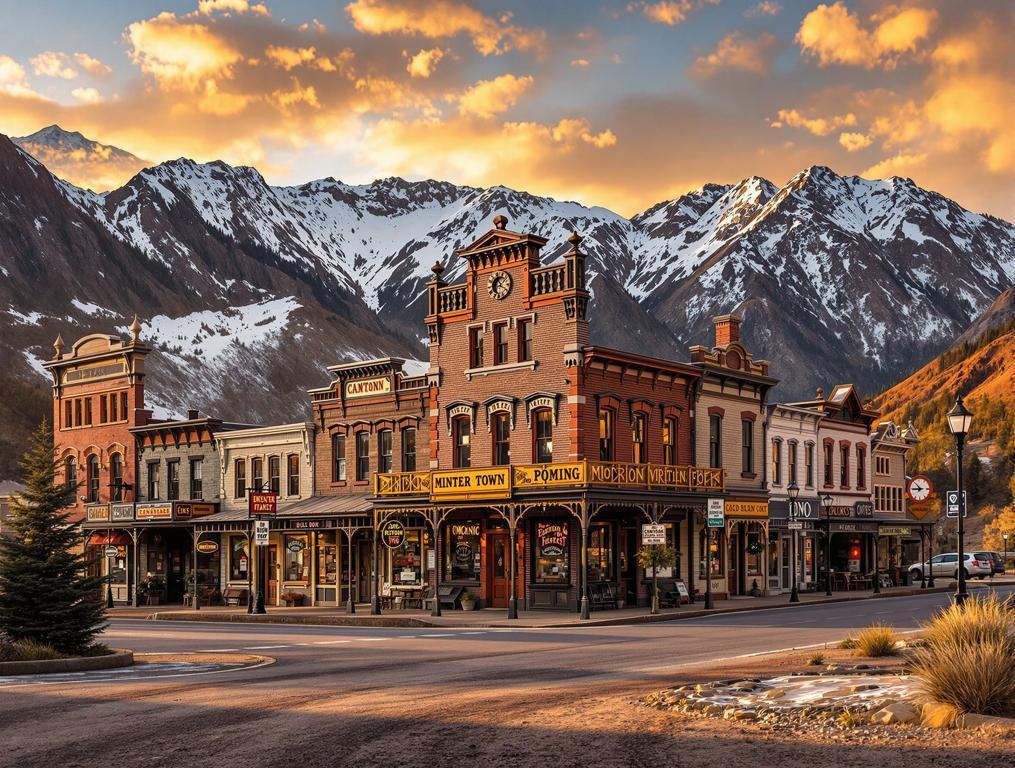I stop midway across Victor’s empty main street, feeling like I’ve wandered onto a perfectly preserved movie set. The midday July sun illuminates brick facades that have stood since the 1890s gold rush, not a chain store in sight. At 9,780 feet elevation, the air is noticeably thinner, but what truly takes my breath away is how this tiny town of just 354 residents has preserved over 90% of its original mining-era structures while nearby towns commercialized their history.
This is Victor, Colorado – a mining town time capsule located 45 minutes west of Colorado Springs, where the gold that once built Denver’s capitol dome was extracted from the surrounding hills. Yet unlike its neighbor Cripple Creek, Victor remains wonderfully authentic, as if the last gold miners just stepped out for lunch.
America’s highest gold rush time capsule reveals forgotten battles
Walking Victor’s grid of historic streets feels like stepping through a portal to 1899. The town sits at nearly two miles above sea level, making it one of America’s highest incorporated cities. Its mountain isolation has preserved what larger mining towns lost to development.
Preserved Victorian storefronts line Victor Avenue, their original woodwork and ornate details intact. The industrial heritage remains visible in the massive mining headframes that punctuate the skyline like exclamation points.
What makes Victor extraordinary isn’t just what you see – it’s what happened here. The infamous Battle of Bull Hill in 1894 saw miners fighting corporate interests in a labor dispute that shaped Western mining history. The battle’s aftermath lingers in local lore, with unexplained phenomena that would make a prospector’s hair stand on end.
Ghost stories and mining legends beyond the tourist trail
While tourists flock to Cripple Creek’s casinos just seven miles away, Victor guards its mysteries for more curious travelers. The Black Monarch Hotel, once a brothel and saloon, now offers themed rooms where guests report unexplained footsteps in empty hallways.
Local mining legends feature hidden gold veins and strange disappearances that rival the superstitions of other American mining communities. These aren’t tales manufactured for tourists – they’re the genuine articles passed down through generations.
“You won’t find this in Cripple Creek anymore. Victor still feels like the real deal – where you can touch the walls miners built and walk the same boardwalks without fighting through casino crowds.”
Unlike towns that went bust or became tourist traps, Victor took a different path. While some mining towns transformed into art havens, Victor preserved its authentic character – a decision that’s kept it wonderfully under-visited compared to Colorado’s other preserved mining towns like Silverton.
Hiking through history: The Vindicator Valley Trail’s secrets
The 2-mile Vindicator Valley Trail offers the perfect introduction to Victor’s mining legacy. This interpretive path winds through original mine structures, where rusted machinery stands frozen in time against a backdrop of alpine meadows and snow-capped peaks.
Summer wildflowers carpet the landscape around century-old mine buildings. The trail leads to one of Victor’s newest attractions – Rita the Rock Planter, a whimsical troll sculpture built entirely from recycled materials by Danish artist Thomas Dambo.
The surrounding mountains offer hiking comparable to other small towns with geological wonders, but with far fewer people on the trails. You’ll often have entire mining ruins to yourself – something unheard of in Colorado’s more famous mountain towns.
What the guidebooks won’t tell you
Visit Victor on weekday mornings for the most authentic experience. Arrive via Highway 67 from Woodland Park, which offers superior Rocky Mountain views compared to the casino-lined approach from Cripple Creek.
The Gold Camp Bakery makes sourdough from a 100-year-old starter – arrive before 10am or they’ll sell out. For the perfect photo of the American Eagle headframe, head to Diamond Avenue around 8am when morning light illuminates the structure against the mountain backdrop.
July and August offer optimal exploration conditions, but by mid-September, snow becomes possible at this elevation. Victor’s position on the sunny side of Pikes Peak means trails often remain accessible longer than expected.
As I drive away from Victor, the rearview mirror frames a town that feels like Colorado’s best-kept secret – a place that’s resisted the fate of becoming either a ghost town or a caricature of itself. It stands as genuine as a silver dollar, a reminder that sometimes the richest discoveries lie just beyond the crowded path, waiting for those willing to venture a few miles further into America’s golden past.
